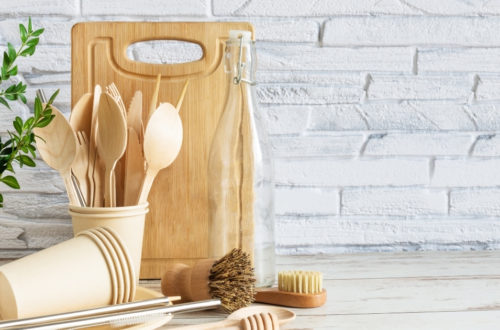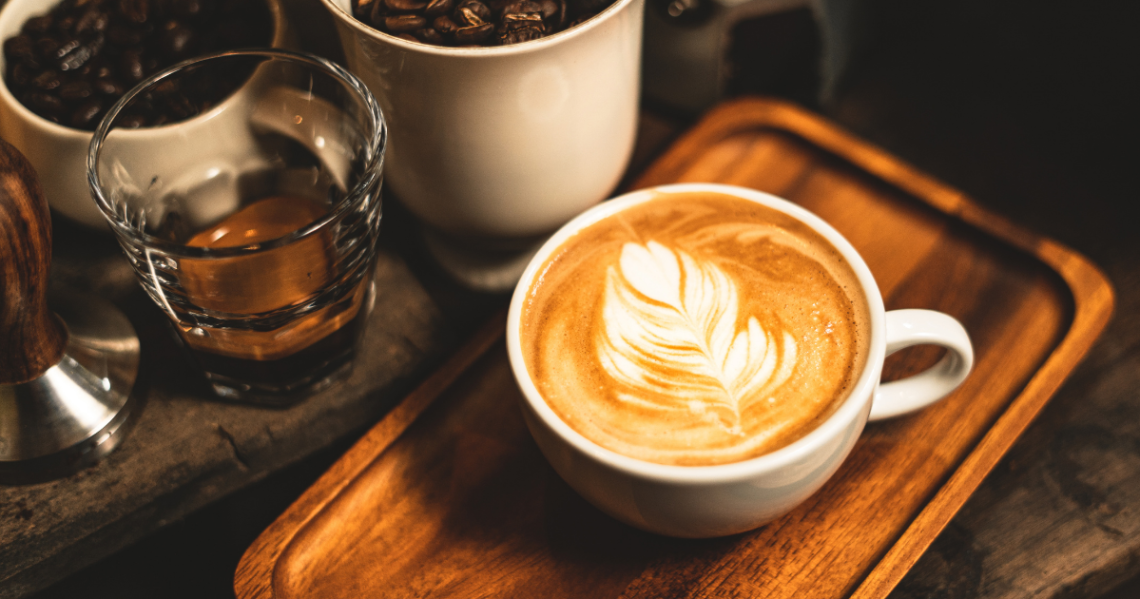
Eco Coffee at Home: Making Coffee more Sustainable!
There’s no better way to start the day than a fix of coffee for many of us. Our morning routine isn’t even something we think twice about, but maybe we should start.
Global coffee consumption has doubled over the past 30 to 40 years. Unfortunately, this dramatic increase in the demand for coffee has made modern cultivation methods quite intense, which can actually prove destructive in many aspects. They decrease biodiversity and rely on massive amounts of fertilizer and pesticides to ensure the fast production of coffee.
To put it simply, being sustainable means being responsible for our actions today so the future generation can live peacefully. Our waste also has a detrimental impact on the environment, with some products taking approximately 500 years to break down. The discarded remains can even be a threat to wildlife and marine life.
The environmental crisis is quite overwhelming, but you can enjoy your morning cup of coffee, knowing that you’re doing your bit for a better future for the world.
Contents
Coffee Labels Explained
Have you ever gone out to buy coffee but there were so many unfamiliar terms you were dazed? Although all the information is stated, it does get a little confusing. Don’t be alarmed; we’ll differentiate each of the main eco friendly terms for you!
Organic Coffee
This refers to coffee that has been grown free from chemical fertilizers, pesticides, harsh chemicals, and extra flavours. Organic coffee is higher in antioxidants, vitamins, and minerals because the authentic and true flavour is maintained.
The cost of buying organic coffee might be higher because it is a healthier option.

Shade Grown Coffee
You might be familiar with ‘Arabica Coffee’; these types of beans are naturally grown in the shade. Traditionally, all types of coffee used to be grown in shaded environments. Unfortunately, due to increased demand from consumers, farmers were motivated to adopt the sun growing method, which removes the natural protective barriers of trees and promotes the use of chemical pesticides to enhance growth.
Shade coffee farms also foster habitats for many diverse varieties of birds, plants, trees and insects. The trees that surround the farms also assist in keeping carbon out of the atmosphere. We should strive to support farmers and businesses that use sustainable farming methods to benefit our environment.
Locally Produced Coffee
Every time you buy locally made coffee, you are, in turn, contributing to your own community. Most people don’t know that coffee is usually at its peak flavour anytime between 3 days to 2 weeks after it has been roasted.
It might be a little more costly but the main advantage of buying coffee from your local coffee shop is that you are almost guaranteed to find a coffee roast within this time frame. The coffee bags should have a stamp or sticker with the production date for you to enjoy the freshness!
Fair Trade Coffee
Often the larger coffee manufacturers and companies tend to focus on earning money, which means they may use shortcuts to produce fast coffee to meet demands. Labourers may be forced to work long hours with less pay and be exposed to many dangerous and toxic fertilizers.
That’s where fair trade coffee steps in. Every time you choose fair trade, you support the ethical treatment of all the labourers that deliver your coffee. In terms of environmental impacts, fair trade enforces standards to ensure no deforestation and sustainable methods are used when farming. Everyone in the supply chain benefits from this
Fairtrade aims to ensure an equal partnership between growers and importers and ensure the farming has no detrimental impact on the environment.
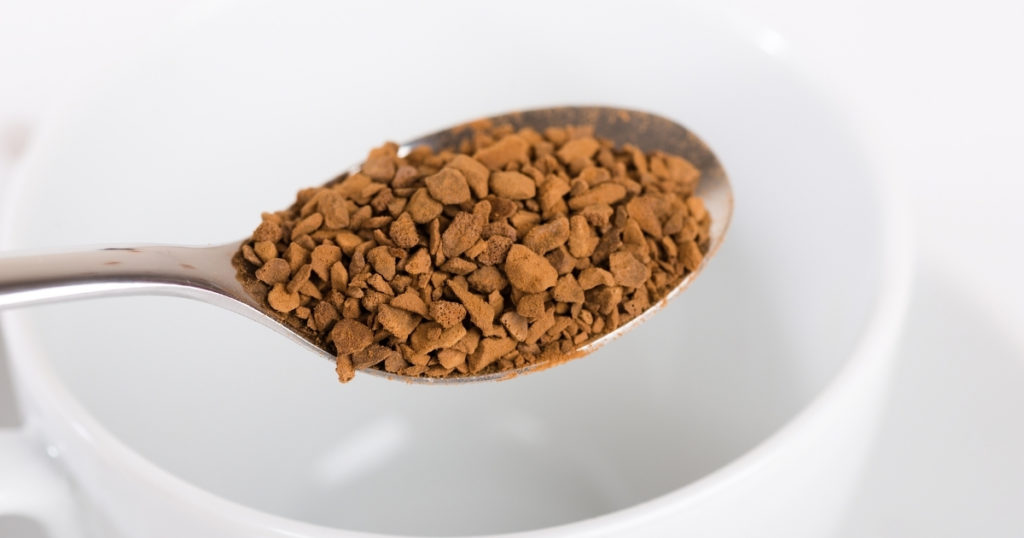
Is Instant Coffee Sustainable?
When looking at all brew methods overall a traditional cup of instant coffee has the lowest carbon footprint. However, choices surrounding how you make your coffee are the deciding factor to whether or not the practices are sustainable. For example, Is the packaging of the coffee in plastic sachets? Are you drinking in a plastic cup?
Eco Friendly Coffee Machine Options
Majority of the time we don’t even realise that every method of brewing coffee has a way that we can make it more sustainable and environmentally friendly. It is guaranteed that once you actively become more conscious of the environment, you will discover how extreme our energy consumption and wastage can be.
Below we have discussed methods of brewing coffee and how we can alter our routine to be more eco friendly and environmentally conscious.
Manual brewing Methods (Energy Saving)
If you’re looking to make your daily coffee routine more eco friendly, manual brewing is definitely worth considering it ensures minimal energy consumption and waste. With manual brewers, little energy consumption is needed just to heat the water. You can cut energy usage altogether by switching to cold brew, which requires no boiled water.
Here are a few manual brewing methods that reduce carbon footprint:

- French Press: This is one of the simplest forms of brewing coffee. The appliance is a plunger that meets a strainer. Once the coffee is brewed, the French Press works by pressing the coffee ground to the bottom of the container, leaving you with high quality coffee.
- Aeropress: This is a relatively recent method of brewing and is fairly straightforward. The device consists of a chamber and a plunger that fits over this to form an airtight seal. At the bottom of the cylinder, a filter cap is screwed to hold the filter and collect the coffee grounds. You put coffee grounds and water through the cylinder and then place the plunger on top. After pressing down the plunger, the water will be forced down to pass the coffee grounds and filter into the cup below.
- Percolator: A coffee percolator is quite complex to explain but to put it simply; it is a special type of kettle that continually boils the coffee till the desired strength is achieved. The way it works is there is a vertical tube inside the pot for the boiling water to travel upwards to where the coffee grounds are, passing through them and then dripping back down. The liquid that passes through the coffee ground, extracts as much coffee flavour and aroma as possible due to this recurring motion.
- Manual pour over: As suggested by its name, the pour-over method refers to pouring hot water over ground coffee to extract the coffee’s maximum flavour. Many people prefer this method because it gives you maximum control over to get the correct taste!
Espresso Machines
Although the best espresso machines deliver fantastic tasting coffee and are one of the most convenient options, the issue is they have a huge amount of power consumption. They take between 1000-2000 watts to run.
Consider buying an energy efficient machine, that has an automated turn off feature when not in use. A large part of the energy consumption happens when the coffee machines are on standby mode. You can do your part by turning off the machine after each use to ensure no energy is wasted. Find the best home coffee machine for you here!
Also, consider the type of filter you’re using. You can go green by investing in a long lasting reusable filter.
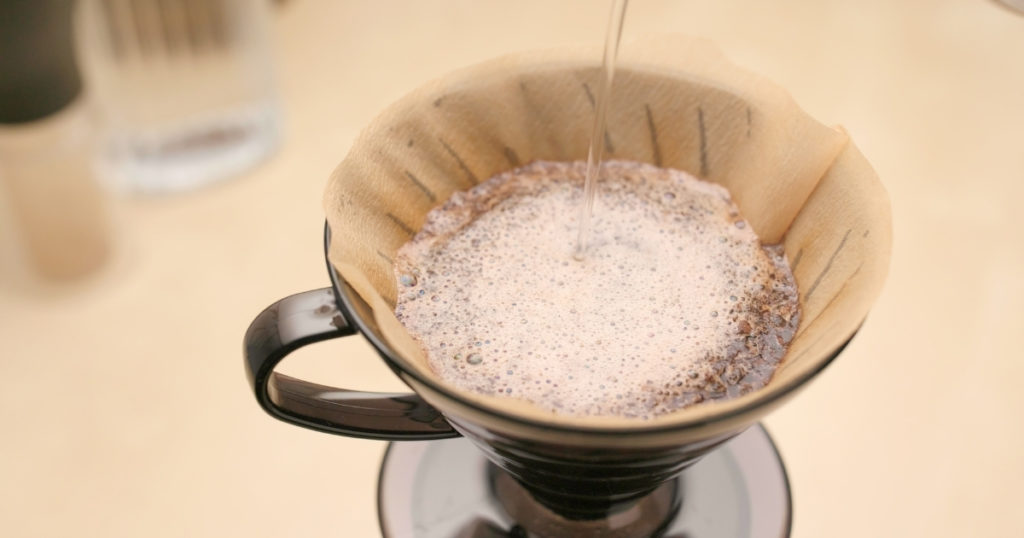
Drip Coffee Makers
Drip coffee machines often have high energy consumption. It is equipped with a warming plate which is designed for your coffee to stay warm for hours. However, they consume up to 1000 watts of electricity when turned on.
It’s crucial to ensure that when choosing these types of machines, find the most sustainable one and make sure you turn the power off immediately after use.
Pod/Capsule Coffee Machines
A new, very convenient way of brewing coffee; the pod capsule coffee machines have quickly gained popularity to enjoy a hassle free cup of coffee daily.
You simply put a pod or capsule into the machine, push a button, and your coffee will be ready. After use, tossing your pod in the bin after use may not be the most sustainable idea. Coffee pods are generally prepared with plastic, aluminium or a mix of both. Ultimately, these materials can take nearly 500 years to decompose at a landfill.
You can try using compostable, biodegradable and refillable coffee pods as they are a sustainable alternative and much more eco friendly.
Eco Friendly and Reusable Coffee Pods and Filter Options
The problem with most standard coffee pods and filters is that they can’t be recycled. The good news is that recently in the market, more environmentally friendly choices have emerged which are worth considering!

Compostable and Biodegradable Coffee pods
Composting food waste is a much more ecological solution to waste disposal. The word ‘Compostable’ means that the product has been certified to completely break down into non toxic components when placed in the right conditions.
Compostable Coffee pods are made of specific biodegradable materials, e.g. corn starch and sugar cane, which imitates the properties of plastic and breaks downs over time.
After you have finished making your coffee, you have to place the used capsule in your local community food waste or compost collection to be sent to the composting plant.
Reusable and Refillable Coffee Pods
Adapting reusable pods into your daily routine can reduce the number of single use capsules that would end up in the landfill. Simply place coffee grounds into the pod and start brewing. You will have to check the compatibility, size and lid type before buying to make sure it pairs with your coffee machine.
Not only do refillable pods help the environment, but they will also be more economical for you in the long run.
Biodegradable and Reusable Coffee Filters
Although paper filters are biodegradable, purchasing a reusable coffee filter can significantly impact the environment more positively as it cuts down on paper wastage. These filters are made from several materials such as metal, steel, plastic or even organic fabrics like hemp or muslin.
Be assured. Reusable coffee filters will last a very long time if taken care of; Ensure it is cleaned regularly, so there is no variation to your coffee taste. These filters do come with a bigger price tag but are an excellent investment for a more green solution in the long run.
What to do With Used Coffee Grounds
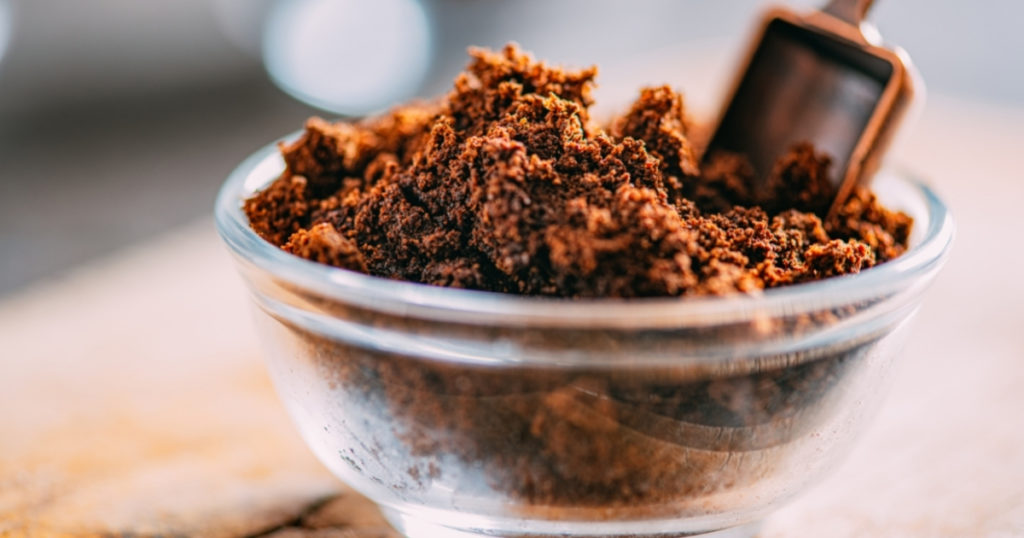
Did you know that used coffee grounds can be reused in so many different ways rather than just throwing them out? Coffee grounds are excellent fertilizers that contain several vital minerals that assist plant growth, e.g. nitrogen, calcium, iron and many more.
Another advantage is coffee grounds attract worms which are very beneficial for gardens and compost. Certain compounds of coffee grounds can be toxic for insects, especially the strong smell. Many people use coffee grounds as an insect and pest repellent.
For those with pets, coffee grounds can work as an external natural treatment instead of prescription products to remove fleas.
Here are some super simple eco-friendly kitchen swaps and more about cooking life here! Or take a look at our best coffee grinders article.




